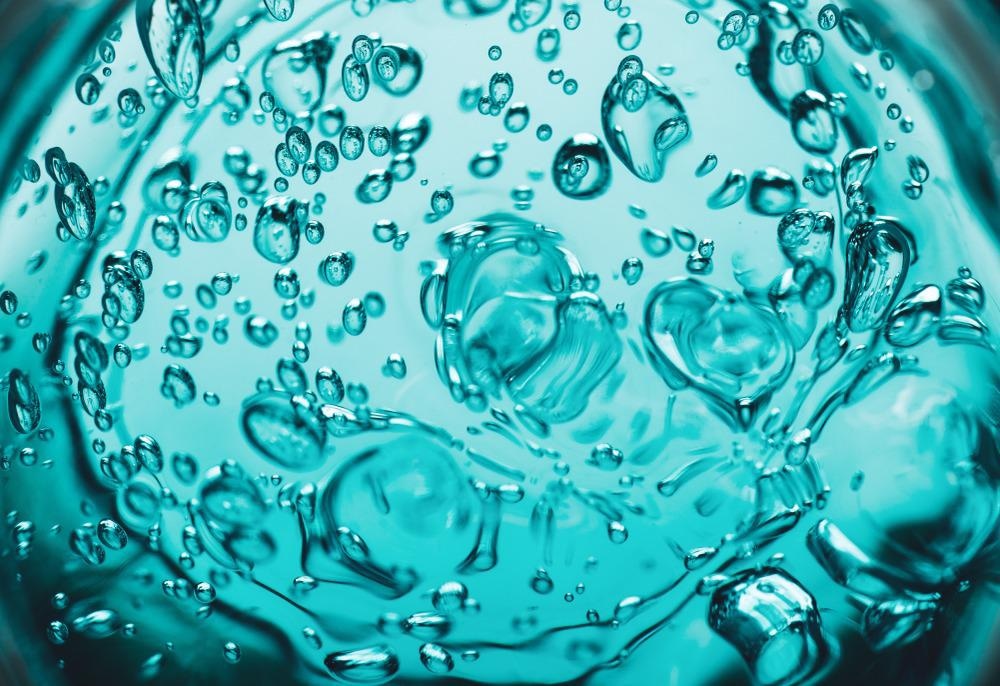Hydrogels with combined adherent, self-healing, flexibility, and conducting properties have a lot of potential for next-generation wearable electronic systems. A dual-network conductive hydrogel was presented as a conductive material in a recent study published in the journal ACS Applied Materials & Interfaces.

Study: Stretchable, Adhesive, Self-Healable, and Conductive Hydrogel-Based Deformable Triboelectric Nanogenerator for Energy Harvesting and Human Motion Sensing. Image Credit: Gilmanshin/Shutterstock.com
The MAGP hydrogels are sandwiched between two interfacial carbon nanotubes (CNTs)/poly (dimethylsiloxane) (PDMS) sheets to create a flexible pressure sensor that can be used to detect sensitive and robust human motion.
What are Conductive Hydrogels (CHs)?
Adaptable electronics with high electrical impulses and ductility are gaining popularity and are already being used in a variety of health tracking, human-machine interfaces, and private information management applications.
Conventional conductive materials lacking nature-inspired biological features have been designed and modified to be suitable for human soft tissue in a variety of ways.
A conductive hydrogel (CH) is an example of a representative system that fills the gap between biological features, delicate natural adaptability, and programmable electrical properties.
The impedance distribution of CHs during the stretching process is many times smaller than that of the electrical circuit, which greatly meets the critical specifications of smart technology in real-world applications, namely, high robustness and reproducibility under different mechanical and elastic deformations.
As a prospective choice for portable electronics, hydrogels with high conductance and acceptable biophysical behavior must be designed and developed at a fast pace.
Conducting Polymers Based Hybrid CHs
A versatile three-dimensional cross-linked polymeric structure and a modified conducting matrix are the two basic components of composite CHs.
Compare to standard conventional electrochemical devices, CHs based on polymer electrolytes have significant benefits, including superior bioactivity and low dielectric resistance, according to numerous investigations.
PEDOT: PSS (poly(3,4-ethylene dioxythiophene): poly(styrene sulfonate)) is an emerging star in the fields of biotechnology and computing, owing to its good workability, conductance, and cytocompatibility.
Covalent interactions with a stiff characteristic, on the other hand, intrinsically have low tensile strength. The use of cross-linking connections to increase mechanical properties is a widely acknowledged method. The lower conductance is, however, unfavorable.
Desired Properties of Conductive Hydrogels
Good adhesion can enable a perfect match between the equipment and uneven epidermis or body tissue in wearable electronics, which is helpful to indicate conversion and communication stability.
Other essential qualities of PEDOT: PSS-based CHs include durability and a long lifetime.
Soft materials are limited by their high moisture content, which makes them vulnerable to mechanical stress during usage and may lead them to lose their tensile stability and functionalities.
As a result, hydrogels with self-healing properties (similar to human skin) are extremely coveted. CHs may then heal any cracks or damage caused by external force or stimulation.
Development of a Novel Hybrid CH
In this work, several chemical bonds were used to create a PSS conducting polymer with excellent adhesion, consistent self-healing capabilities, and mechanical properties.
The interlayer influence of PAAM and PAA produced a key flexible structure throughout. Then, as conducting elements, GR and straight PEDOT: PSS was interpenetrated to form conducting connections.
Research Findings and Conclusion
The researchers created a hydrogel with integrated features such as versatility, adhesion, self-healing, and remarkable conductance.
Before cracking, the hydrogel could be extended to around 500 percent of its original length. It also adhered well to a variety of surfaces, including glassware, metal, timber, and porcelain.
When physically damaged, it showed a strong self-healing capacity without the need for any external source of energy or substances.
The strain sensor has high long-term consistency and endurance, and it may be used as a body motion detector to detect sensitive and forceful human movements.
The D-TENG can also create an open-circuit potential of 141 V and a short-circuit discharge of 0.8 A, allowing it to power 52 LEDs immediately.
The D-TENG can also charge a variety of batteries and demonstrate that it can power tiny devices like a humidity thermostat. This D-TENG can suit a broad range of application demands, from deformable/portable devices to smart communication protocols, owing to its inherent ductility, energy-extraction, and interactive sensing capabilities.
Reference
Dong, L. et al. (2022). Stretchable, Adhesive, Self-Healable, and Conductive Hydrogel-Based Deformable Triboelectric Nanogenerator for Energy Harvesting and Human Motion Sensing. ACS Applied Materials & Interfaces. Available at: https://pubs.acs.org/doi/10.1021/acsami.1c23176.
Disclaimer: The views expressed here are those of the author expressed in their private capacity and do not necessarily represent the views of AZoM.com Limited T/A AZoNetwork the owner and operator of this website. This disclaimer forms part of the Terms and conditions of use of this website.